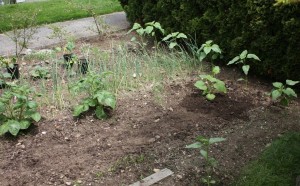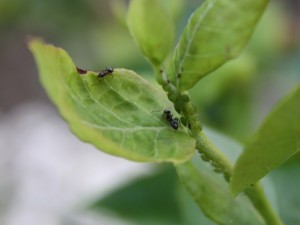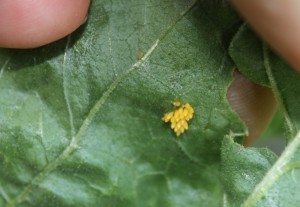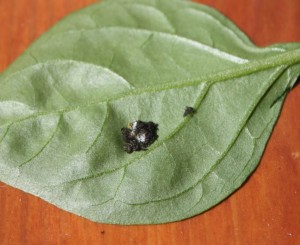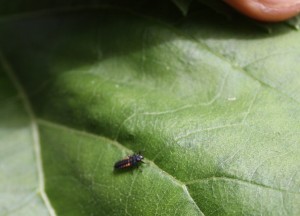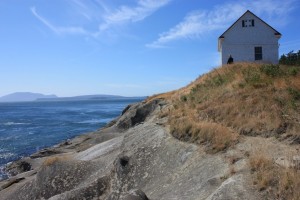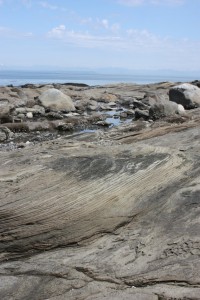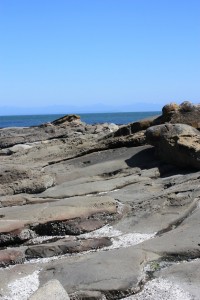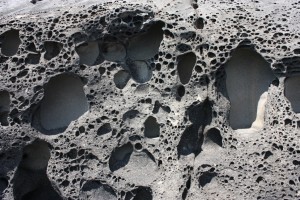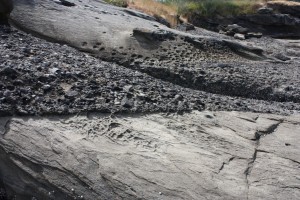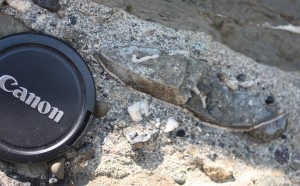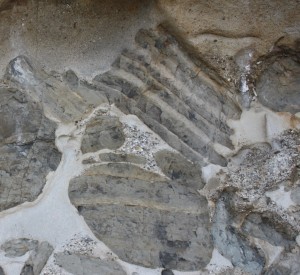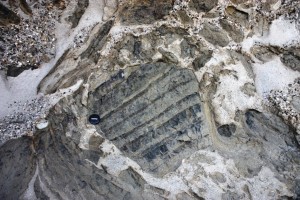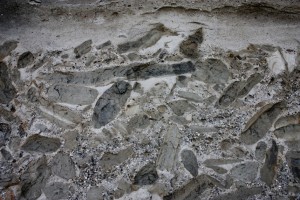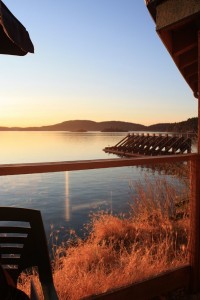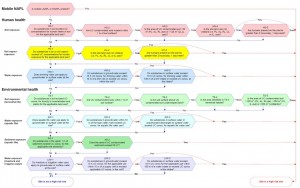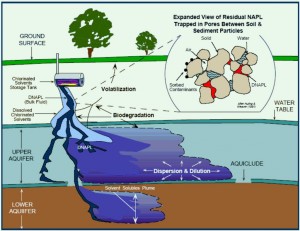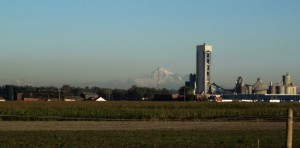The Environmental Science field is full of biologists, so I have worked with a lot of biologists in my day. In my current job, I am the “token geologist”, surrounded by Bio-types. This results in a lot of ribbing back and forth. After listening to a long discussion on some arcane invasive plant species or some subtlety of insect biology, I will finally respond with: “what is its preservation potential in the rock record?” (trust me, to geologists, that is hilarious if well timed). They often exclude me from a conversation by saying “you won’t be interested, it is alive…” Good fun.
Kidding aside, having done a lot of field work with enough biologists, I am amazed by what they know. I can look at rock outcrop and tell them more-or-less believable stories about the history of the rocks, and what they say about the tectonic history of the region. They can look at the surroundings, and tell me things about the plants, the animals, and the ecological interactions that I am completely blind to.
After a couple of years of geology field work in the interior, I could identify two types of trees: pine (they are red or brown) and alder (they are sprouting up all over the decommissioned logging roads I need to access to get to the rocks). I could also tell the difference between mosquitoes, blackflies, noseeums, and deer fly based on the geography of the bites on my skin, but that was about the limit of my field biology. All bugging of my co-workers aside, I lament that I don’t know more.
So I am trying to learn some more biology. Because I work with an invasive plant control guy, I cam now good at recognizing giant hogweed, Japanese knotweed, purple loosestrife, English ivy, Scotch broom and other invasive plants that cause so much stress to our local ecosystems. I am now expanding into learning a bit more about insects, good and bad, in my garden.
Partly to help with this, I joined a local program this year to identify beneficial insects in urban gardens. The program is called UNIBUG: a rather ungainly acronym for “User Network for Insect Biology In Urban Gardens”. This is a program run by the Institute of Urban Ecology at Douglas College, and is administered by Dr. Veronica Wahl.
The idea is really simple: give urban gardeners a bit of background material and the tools they need to collect useful data on beneficial insects. The gardeners dedicate a bit of garden space, and collect a lot more data than the researcher would working alone, setting up and maintaining their own test plots across the City (many hands make light work). It also allows a small army of “citizen scientists” to learn a bit more about beneficial insects, about their gardens, and about how science is done. For some of us, just getting the chance to bend the ear of a PhD ecologist in our gardens is worth a fortune.
The basic program this year involves evaluating if two different plants (yarrow and white alyssum), which are colloquially known to attract beneficial insects, actually do attract statistically significant numbers of insects. To do this, each gardener places a “pitfall trap” (for crawling insects) and a “sticky trap” for flying insects in each of two locations of their garden. The attracting plant is located adjacent to one set of traps, and there is no attracting plant within 5m of the “control” trap. In theory, there will be more bugs trapped near the attracting plant… or, as my grade 10 science teacher would say “The null hypothesis is that the traps would collect the same number of bugs, within the range of statistical significance”.
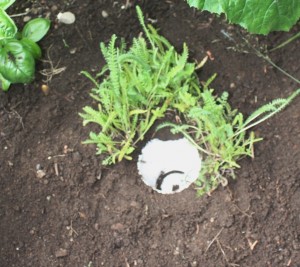 |
| A pitfall trap with Yarrow planted around it. |
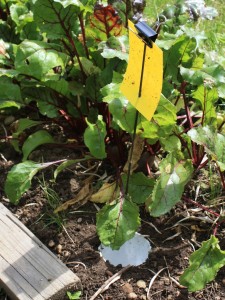 |
| My “control” pitfall and sticky traps. |
For the pit-fall traps, we are instructed to only count the beetles, and to compare the beetles we see to an identification guide we are provided. Our main target are ground beetles of the Carabidae family. These guys eat many common garden pests like caterpillars, aphids, and slugs. Identifying the genus of the beetles we catch is the fun part of the exercise. The sticky traps have to be counted by experts working with microscopes back at the lab, so we just collect and catalogue those.
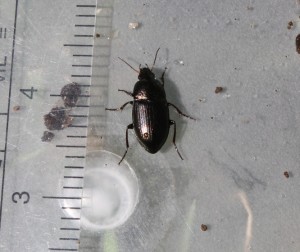 |
| One of the beetles I trapped and counted in week 1. He was subsequently released. |
There are UNIBUG volunteers across the Lower Mainland (keeping Dr. Ronnie running around keeping things running smoothly!), and here in New West, we have volunteers with yard gardens (like me) and several volunteers at each of the City’s three Community Gardens. With us all entering data on-line every week, and collecting stickytrap each week, I see a lot of lab time crunching data in Dr. Ronnie’s future. We get the fun part, she has to do the grunt work. The glory of a career in science!
